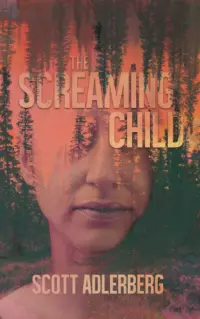My new novel, The Screaming Child, published by Ghoulish Books, is a novel that mixes mystery with horror. It’s a story told from the point of view of a woman named Eleanor, a mother trying to go on with her life after her 12-year-old son has vanished. Perhaps he was murdered, perhaps kidnapped. The police are investigating. To keep herself busy, Eleanor leaves the city for a distant rural area to finish a book she is writing about an explorer. The explorer herself was killed on her last expedition to the wooded region not that far from Eleanor’s country shack, and when Eleanor hears what she thinks are the screams of her own child coming from deep within those same woods, she is launched into her own dangerous journey.
From this book’s conception, it only seemed appropriate to have the story told through the eyes of the anguished mother. The original kernel of an idea began with a dream I had years ago, in which a woman was standing in a wide valley and could hear a child’s screams from faraway. I both was and was not the woman – as happens in dreams – and I knew her thoughts. She’s convinced the child is her own, though how and why the child is distant from her wasn’t apparent in the dream. Neither was the reason why the child is screaming. But that’s all there was, and I woke up and wrote the dream down. Then the brief description sat in a notebook, not looked at, for a couple of decades. Yet I had the image in the back of my mind all that time, thinking that I could spin it out into a suspenseful narrative. I could see it as a murder mystery, a ghost story, a psychological horror story – any number of things. But this dream came before I was a parent, long before, and as it turned out, I wasn’t ready to explore this material until I had a child of my own, just like the woman in the dream.
 I remember reading words of advice from the great horror writer Ramsey Campbell. In discussing his writing, he explained how he found a rich, creative mine to draw from when he started writing about his most intense, personal fears. It’s something, I’m sure, many writers do. Horror writers in particular. If you’re trying to make people feel fright, dread, anxiety – the states a good horror story can induce – it helps if you’re describing emotions that at some level you truly feel. When I became a parent, I could in fact comprehend what that mother from the dream would experience hearing the cries of her missing child. The uncertainty she’s facing. Is my son dead or alive? Will I ever see him again? She’s living through a parent’s worst nightmare, and the fact that it’s a common fear doesn’t make it any less unsettling. If anything, it’s a fear countless readers will be able to relate to, and the writer doing his or her job can tap into that.
I remember reading words of advice from the great horror writer Ramsey Campbell. In discussing his writing, he explained how he found a rich, creative mine to draw from when he started writing about his most intense, personal fears. It’s something, I’m sure, many writers do. Horror writers in particular. If you’re trying to make people feel fright, dread, anxiety – the states a good horror story can induce – it helps if you’re describing emotions that at some level you truly feel. When I became a parent, I could in fact comprehend what that mother from the dream would experience hearing the cries of her missing child. The uncertainty she’s facing. Is my son dead or alive? Will I ever see him again? She’s living through a parent’s worst nightmare, and the fact that it’s a common fear doesn’t make it any less unsettling. If anything, it’s a fear countless readers will be able to relate to, and the writer doing his or her job can tap into that.
Apart from everything else it is, writing fiction is a way of communicating in your mind with writers you have read and re-read and come to love. You want to do your own thing, of course, but somewhere in your most private thoughts, you’re carrying on a kind of dialogue with your literary favorites. I do, anyway. It’s a combination of inspiration and aspiration. I’ll think to myself: here’s my attempt to produce a book that has something of Jim Thompson, Ruth Rendell, and Edgar Allan Poe (as my Graveyard Love did). For another book (Jack Waters), it’s every revenge tale I ever read, Robert Louis Stevenson adventure stories, and the South American novels I adore. In the case of The Screaming Child, with its female narrator, I called upon writers such as Jean Rhys and Marguerite Duras and Joan Didion, though none of them wrote mysteries or horror. On top of that, they are each quite different, but I’ve found that I love each of these writers, at least in part, because of a quality of voice they share that puts their central characters so often at odds with the world. Eleanor, dealing with her grief, having trouble in her marriage, not confident in the police, is a woman in this vein, and she winds up fighting battles on various fronts.
Which brings me to emotion and control. In Rhys’ Wide Sargasso Sea, to name one example, the narrator tells a story that contains extreme emotion, and at the end madness, but the style retains a beautiful constraint throughout. Joan Didion, in her inimitable manner, does something similar with Maria Wyeth in Play It As It Lays, and with Duras, well, take almost anything she wrote. Women under duress, their feelings in turmoil, and this is all expressed in the language. We’re not talking hardboiled here, where the attitude essentially is stoic. In hardboiled fiction, emotion exists in people, but it’s repressed, held under the surface. To let the emotions show but keep a tight formal control is what I’m getting at, and it’s what I was trying to do with The Screaming Child. At all costs, I wanted to avoid sentimentality. I guarded against over-explaining and sought to keep the language spare. I told myself to evoke what Eleanor is going through, to do that clearly, but to always do it in as few words as possible. I’ve never written a long novel, but the desire to keep this one short was especially strong. I’m a firm believer that with compression, the novel you’re working on gains force, and that force will help keep the reader with you. It’s the implicit deal between writer and reader: if you don’t waste a second of the reader’s time on non-essentials, they’ll give you as much of their precious time as you ask from them.
Get The Screaming Child directly from Ghoulish Books

About the author
Scott Adlerberg is the author of five novels, including The Screaming Child, Graveyard Love and Jack Waters. His short fiction has appeared in various anthologies. Every summer, he hosts the Word for Word Reel Talks film commentary series in Bryant Park in Manhattan. He lives in Brooklyn.







